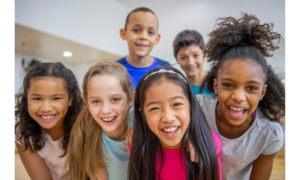Teachers are encouraged (and often trained) to use positive reinforcement because research in education and psychology shows it’s one of the most powerful ways to shape behavior and build motivation. So naturally, we do it—we praise students, hoping that by highlighting good behavior, others will notice and quickly get on task.
While this strategy may work sometimes, the truth is—it’s not the most effective way to consistently help students follow directions or stay focused.
The Problem with “Name Calling Praise”
Working with new teachers, I often hear praise that sounds like this:
- “Good job, John. Good job, Becky. Good job, Sam.”
- “Thank you, John, for being on task. Thank you, Becky, for being on task. Sam is also on task.”
- “I like how John is working right now. I like how Becky is also working right now.”
Here’s the issue: when we praise by naming individual students who are already doing the right thing, a few things usually happen:
- Other students immediately call out: “I’m quiet too!” or “What about me?”
- Students start performing for attention instead of building internal motivation.
- Those already struggling with behavior may feel left out or unnoticed.
This type of praise can create more management challenges instead of fewer.
What To Do Instead: Behavior-Focused Praise
Effective classroom praise is specific, group-oriented, and behavior-based—without using names. Instead of praising one child, describe the behavior you want to see. For example:
- “I see four students have already started reading quietly.”
- “Two tables are quiet and ready to learn.”
- “So many students are sitting criss-cross applesauce. That lets me know we’re almost ready to start.”
This works because:
✅ It sets clear expectations—students know exactly what behavior you’re looking for.
✅ It motivates without singling kids out—everyone has a chance to be included.
✅ It reduces interruptions—no more “What about me?” moments.
✅ It creates momentum—as more students join in, the class naturally shifts toward the desired behavior.
When praise is specific and anonymous, students internalize expectations instead of waiting for a “name-check” from the teacher.
Try This Tomorrow
Next time your class gets noisy or distracted, instead of saying “Thank you, Sam, for being quiet.” Try saying: “I see students showing respect by sitting quietly and getting ready to learn. You’ll be surprised at how quickly more students follow—without complaints, interruptions, or the chorus of “What about me?”
The Bottom Line
Praise is powerful, but only when it’s used effectively. The secret isn’t giving more praise—it’s giving the right kind of praise. Focus on behaviors, not names, and you’ll build a calmer, more motivated classroom where every student feels included.



